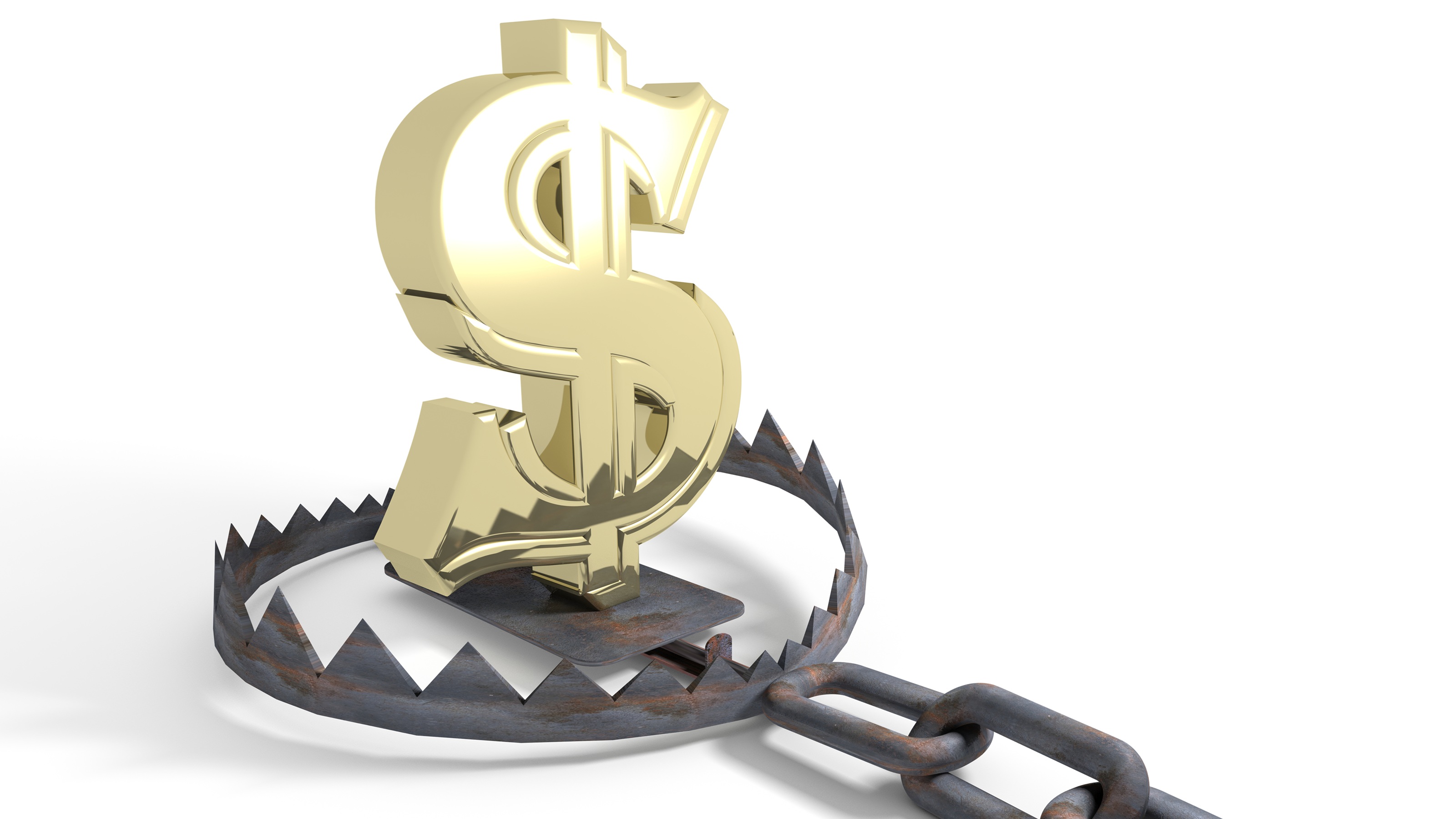Namaste Invested: Look to Yoga to Build Your Wealth
It’s uncanny how the principles of yoga apply to financial success. Here are five elements of yoga that are particularly useful for personal wealth.


I have been practicing yoga for more than a decade. I love the physical and mental benefits it provides. Yoga makes me stronger and more flexible and helps counteract the effects of sitting in a chair at my desk all day. Yoga is also a great stress reliever, helping to clear my mind and keeping me grounded and focused. I love how I feel after a great yoga class – strong and empowered, yet balanced and calm.
As I was practicing recently, it occurred to me that a number of the lessons I have learned from my yoga practice can be applied in our financial lives as well:

1. Focus on your own mat.
It can be tempting to compare yourself to the people around you in a yoga class. There is always someone that can bend a little deeper or hold a pose a little longer than you can.
It’s important not to worry about what the person next to you is doing. Instead, focus your attention and energy on the practice on your own mat.
This same philosophy can also be applied in our financial lives. You will be better served by ignoring what your neighbor is doing with their finances. Their investment allocation might be right for them, but that doesn’t mean it is the one that will best help you reach your goals. You may envy their outwardly lavish lifestyle, but that doesn’t mean they are on track for retirement. Ignore what you see other people doing with their finances and focus on yourself instead.

2. Be mindful.
One of the benefits I get from yoga is it helps me be more mindful. Through yoga I find myself consistently more aware of my surroundings, feelings and actions, living more thoughtfully and purposefully in the present.
It can be easy to get caught up in the hustle of everyday life and forget to be mindful in each moment. I find this also to be true in personal finance, particularly when it comes to spending. It is too easy to absentmindedly swipe a credit card, spontaneously add to our Amazon cart without thinking, or overdo it on expensive takeout.
One of the best things that you can do to build wealth is to control your savings rate – which means controlling your spending. Unfortunately, very few people have an accurate idea of what they spend their money on. There are various ways that you can incorporate mindfulness into your spending decisions, such as tracking where every dollar you spend goes or asking yourself whether you are buying something you need or something you want.

3. Look past the wobbles.
There are times during my yoga practice when I find myself constantly wobbling and falling over, struggling to find my balance. When I find myself swaying and struggling to stick with the pose, I take a deep breath, look across the room, and find my drishti – a spot on the wall that doesn’t move that I can focus my gaze on to help me remain steady until the wobbles pass.
Occasionally the stock market also has “wobbly” days, which can be unsettling for many investors. Usually, the best thing that you can do in times of market volatility is to take a deep breath, look toward the future, and focus on your drishti: Remind yourself of your long-term goals, revisit your financial plan, and keep in mind that you put your plan in place when your emotions weren’t running high. Maintaining your focus on the long term is one of the simplest ways to stay the course through any market volatility.

4. Make adjustments, just don’t give up.
On days when everything feels more challenging than it usually does, I am sometimes tempted to give up. Rather than quit, however, I pause, take a breath, and then I make small adjustments. This might mean using a yoga block for support or simply bending my knees deeper. The important thing is to modify in small ways that still allow me to continue my practice. I have found this approach also works well in times of market volatility.
If market volatility has you spooked and you are tempted to sell everything in a panic, don’t just quit investing. Instead, try making some minor adjustments first. You could sell just enough stocks to raise one year of expenses in cash, or you could “flip” your portfolio from a 60/40 stock/bond mix to a 40/60 stock/bond mix. You could also trim your spending instead of your stock allocation. The important thing is not to give up entirely.

5. Do nothing.
Savasana, one of my favorite poses, occurs at the end of the practice and is a meditative posture where you lie on your back in total relaxation, bringing stillness to your body and your mind. It sounds easy, but it can be challenging to just let go and to resist the urge to twitch or move. We are all so accustomed to the idea that you need to be taking action or moving to accomplish something, but taking time to do nothing in Savasana is what allows me to reap and enjoy the benefits of the hard work I just did. This same premise also applies to investing.
Investors often think that constant trading, trying to time the market, or picking the next hot stock is the best way to accumulate wealth – it’s not. In fact, a Fidelity study once found that the best performing accounts were owned by people who forgot they had an account!
Once you put in the work of crafting your financial plan and developing your asset allocation, then take a financial Savasana: Do nothing. Resist the urge to tweak your plan or investment portfolio at the slightest hint of market volatility. Unless there has been a meaningful change in your life that necessitates an update to your financial plan, take some time to relax and reap the benefits of the hard work you just did.
Hopefully these lessons I have learned from my yoga practice can help you relieve some of the financial stress you feel in your life.
Namaste!
Profit and prosper with the best of Kiplinger's advice on investing, taxes, retirement, personal finance and much more. Delivered daily. Enter your email in the box and click Sign Me Up.

Kathleen Kenealy, CFP®, CPWA® is the Director of Financial Planning and a senior wealth adviser for Boston Private, an SVB company. She specializes in working with successful individuals and families to manage, protect and grow their assets. Kenealy provides guidance on investment, retirement, philanthropic, estate and tax-planning strategies.
-
 Trade Uncertainty Sparks Whipsaw Session: Stock Market Today
Trade Uncertainty Sparks Whipsaw Session: Stock Market TodayVolatility is making a cameo here in mid-October, a generally positive month marked by its historic stock market events.
-
 How to Add Your Passport to Google Wallet
How to Add Your Passport to Google WalletTravelers can now store and use their digital passport on Android for faster, more secure airport experiences.
-
 Medicare Open Enrollment: Why You Need to Pay Extra Attention to Part D, From a Financial Adviser
Medicare Open Enrollment: Why You Need to Pay Extra Attention to Part D, From a Financial AdviserThe lowest premium for prescription drug coverage might not actually save you the most money. Make sure you take copays into consideration and do the math.
-
 How the One Big Beautiful Bill Will Change Charitable Giving
How the One Big Beautiful Bill Will Change Charitable GivingTaxpayers who don't itemize will be able to take a bigger deduction for donations, which could boost giving. However, high-income donors could see their tax benefits reduced.
-
 A 'Fast, Fair and Friendly' Fail: Farmers Irks Customers With Its Handling of a Data Breach
A 'Fast, Fair and Friendly' Fail: Farmers Irks Customers With Its Handling of a Data BreachFarmers Insurance is facing negative attention and lawsuits because of a three-month delay in notifying 1.1 million policyholders about a data breach. Here's what you can do if you're affected.
-
 Serving the HNW Market: How Financial Advisers Can Break Through and Deliver Lasting Value
Serving the HNW Market: How Financial Advisers Can Break Through and Deliver Lasting ValueFinancial advisers have a significant opportunity to serve high-net-worth clients by elevating their capabilities, delivering comprehensive planning, building diverse teams and prioritizing family wealth education.
-
 Don't Just Sell, Connect: How Financial Advisers Can Ignite Their Sales Growth
Don't Just Sell, Connect: How Financial Advisers Can Ignite Their Sales GrowthAvoid complacency and embrace small, consistent improvements to optimize your sales process and results.
-
 Are You a Small Business Owner Buckling Under Economic Pressure? Here's How You Can Cope
Are You a Small Business Owner Buckling Under Economic Pressure? Here's How You Can CopeSignificant emotional and financial challenges, including tariff worries, are piling up on small business leaders. Here's how leaders can develop more healthy coping strategies and systems of support.
-
 To Raise Prices or Not to Raise Prices: Tariff Tips for Small Businesses
To Raise Prices or Not to Raise Prices: Tariff Tips for Small BusinessesSmall businesses are making critical decisions. Should they pass on higher costs due to tariffs, or would that only cost them more in lost customers?
-
 Five Retirement Planning Traps You Can't Afford to Fall Into, From a Wealth Adviser
Five Retirement Planning Traps You Can't Afford to Fall Into, From a Wealth AdviserTo help ensure you reach your savings goals and enjoy financial security in your golden years, be aware of these common pitfalls. The key is to be proactive, informed and flexible.
